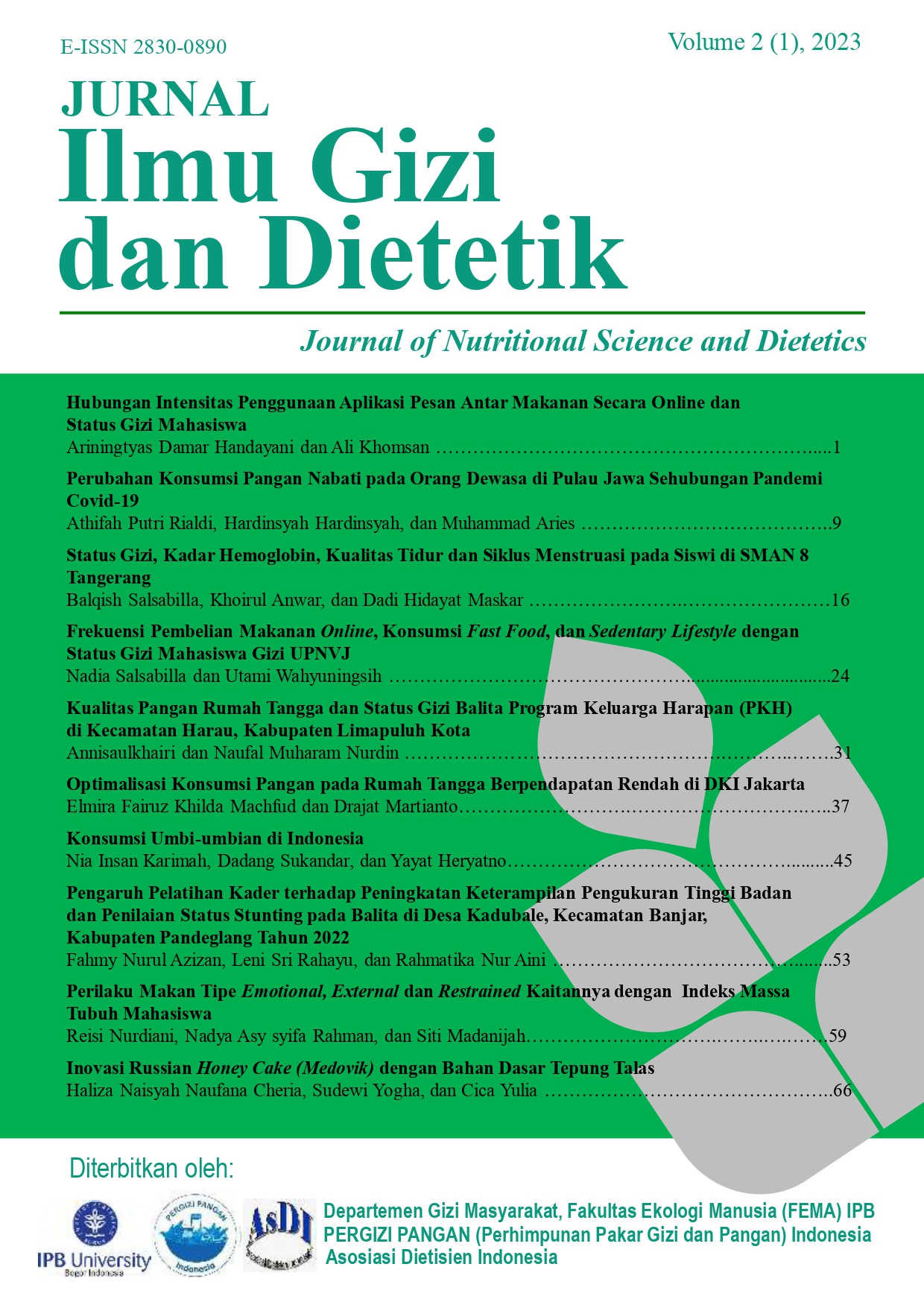Frekuensi Pembelian Makanan Online, Konsumsi Fast Food, dan Sedentary Lifestyle dengan Status Gizi Mahasiswa Gizi UPNVJ Frequency of Online Food Purchase, Fast Food Consumption, and Sedentary Lifestyle with Nutritional Status of Nutrition Students UPNVJ
Abstract
Online lectures have an impact on student food availability because technological sophistication makes it easier for students to access food, but in choosing the type, students become consumers of most food purchasing applications with fast food choices. Online lectures also have an impact on increasing students’ sedentary activities. This can affect the nutritional status of students. The purpose of this study was to analyze the relationship between the frequency of online food purchases, consumption of fast food, and a sedentary lifestyle with the nutritional status of the Nutrition Study Program students of the
UPNVJ Undergraduate Program. This study uses a cross-sectional design with a student population of 2019, 2020, and 2021 batches taken using a stratified random sampling technique of 149 subjects. Collecting data through filling out online questionnaires. The results showed that the majority of students had normal nutritional status, infrequent online food purchases and infrequent consumption of fast food, and low sedentary activity. Chi-Square statistical test showed the results of online food purchase frequency (p=0.031), fast food consumption frequency (p=0.355), and sedentary activity (p=0.510).
It can be concluded that the frequency of online food purchases is related to the nutritional status of students, while the frequency of consumption of fast food and a sedentary lifestyle is not related to nutritional status.

